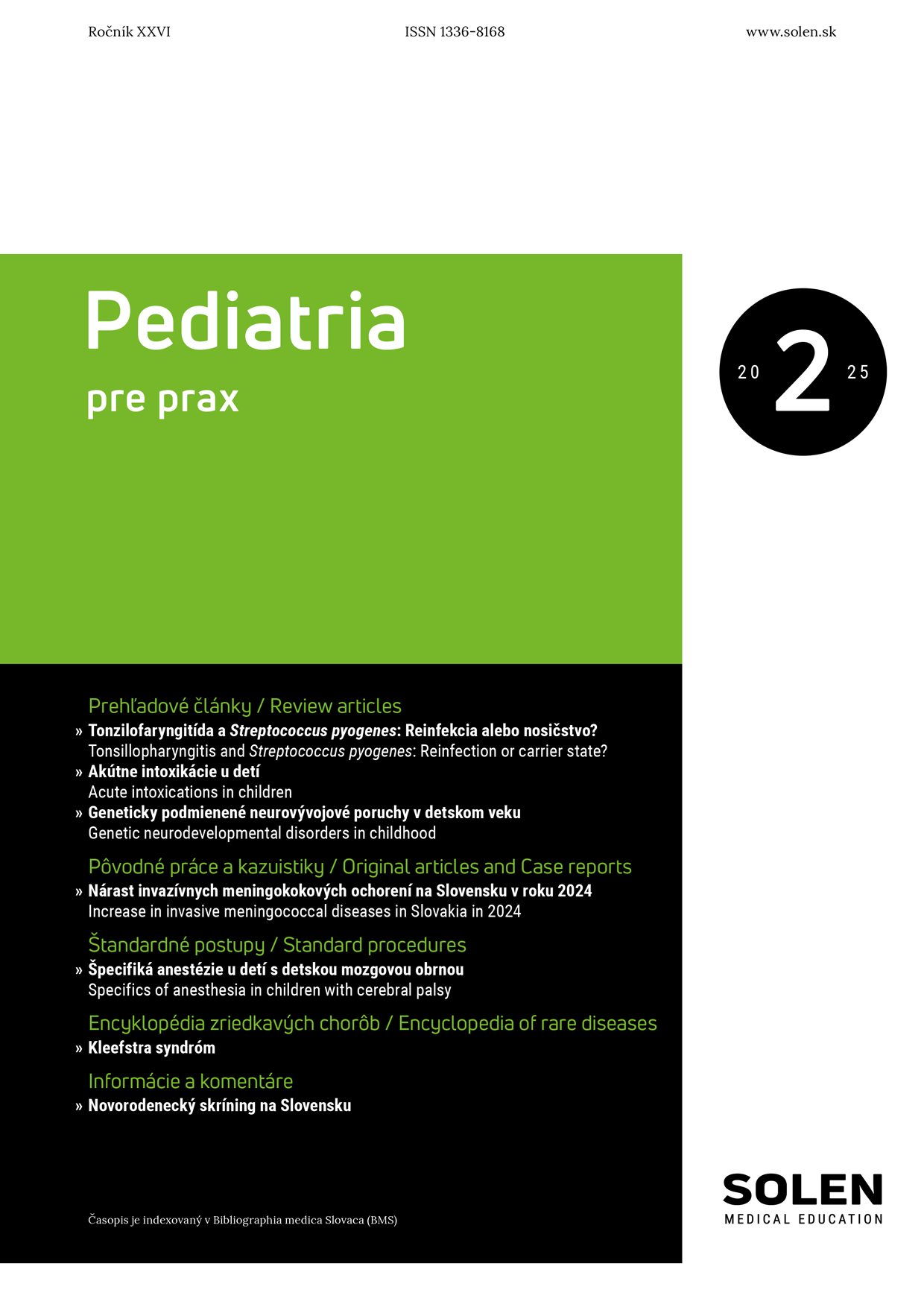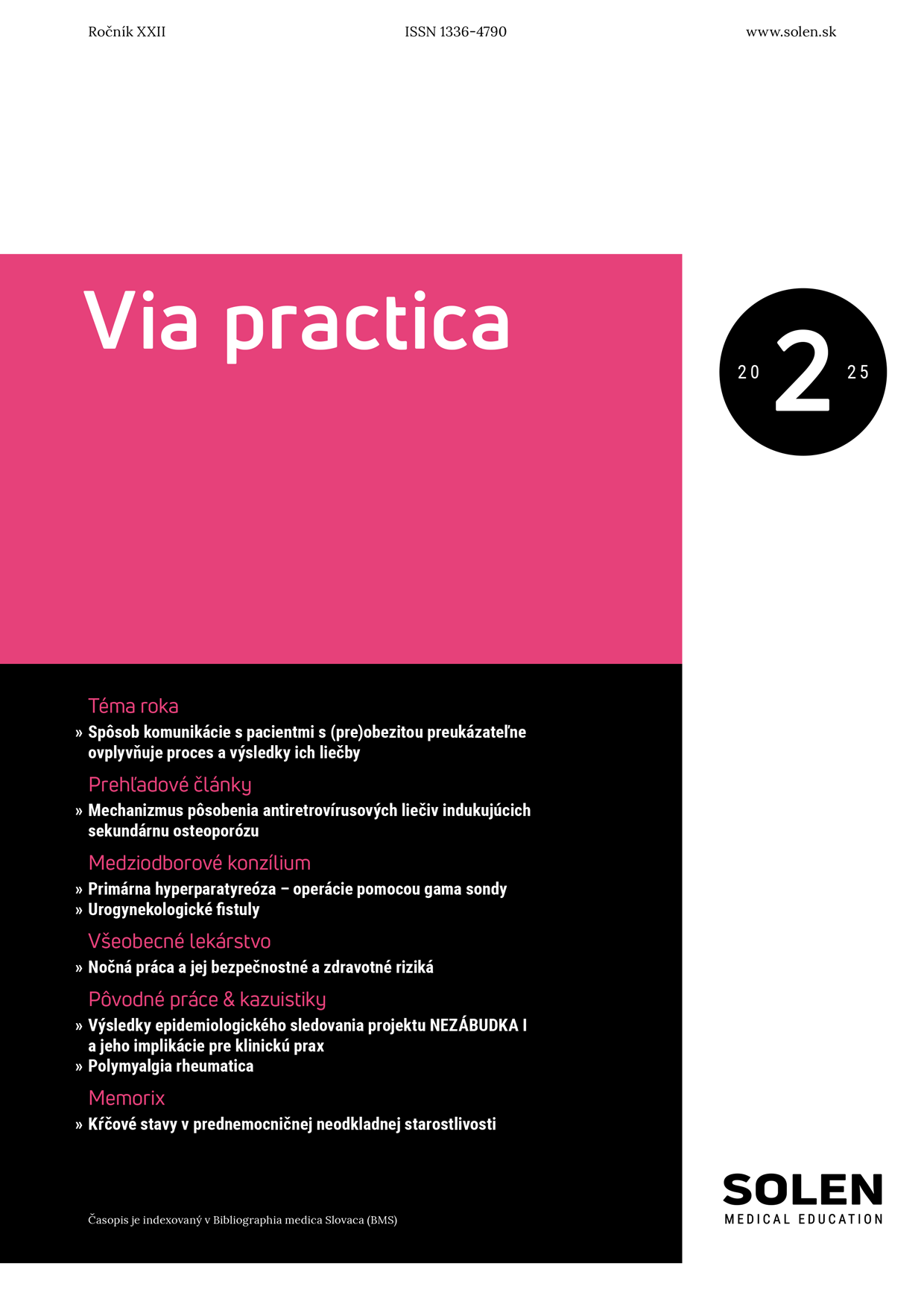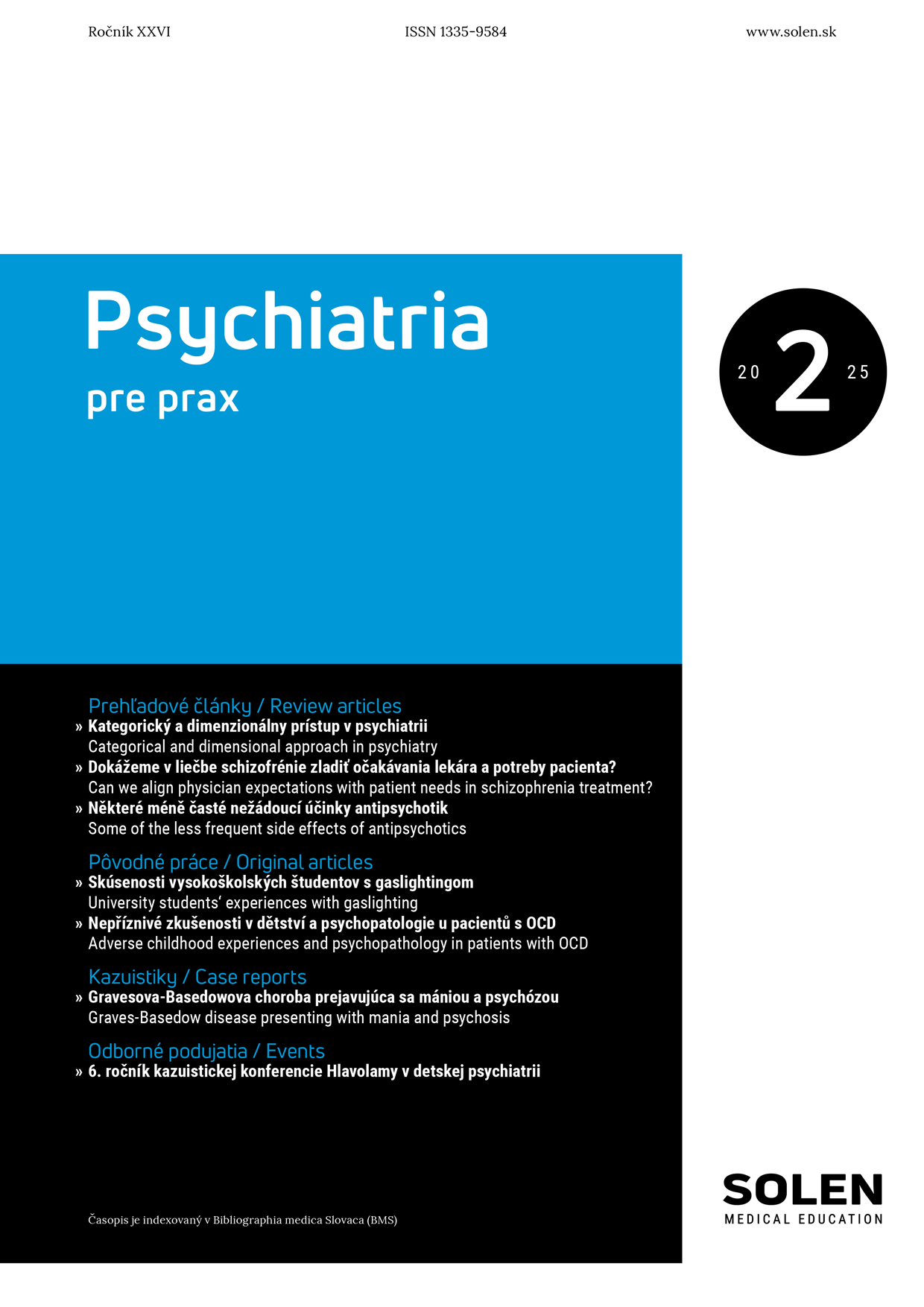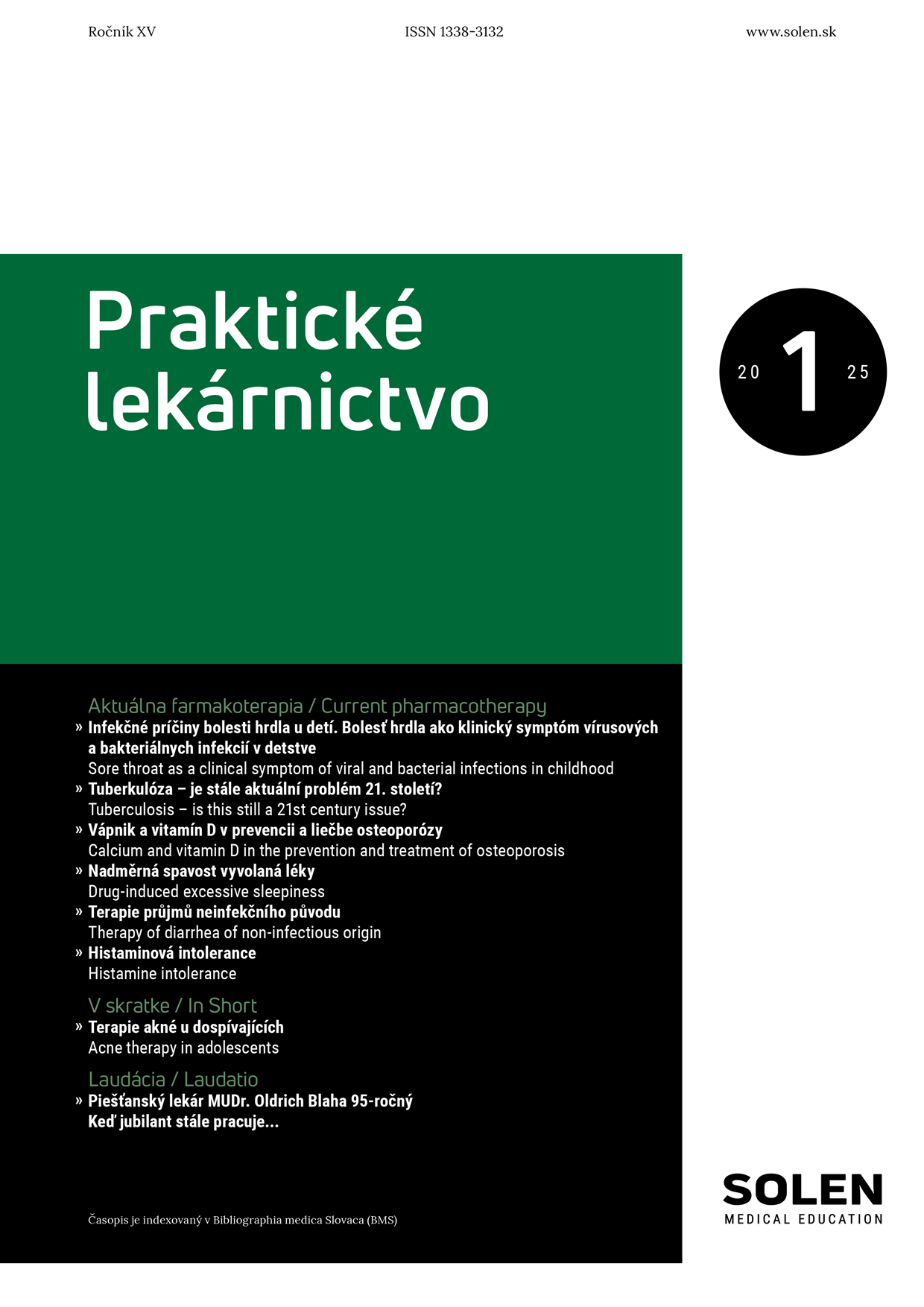Pediatria pre prax 1/2023
Craniosynostosis – diagnostics and surgical treatment
The presence of skull sutures is an important part of the healthy growth and development of not only the skull itself but especially the child’s brain. Various complications can occur in patients suffering from craniosynostosis. Most often we talk about the so-called craniofacial deformity, which is caused by the disproportionate growth of the brain perpendicular to the closed suture. Another, very serious complication is increased intracranial pressure leading to brain damage, learning and behavioral disorders, reduced intellect, and, in very rare cases, even death. Therefore, correct and early diagnosis and subsequent treatment are very important steps in preventing these complications. When suspecting the occurrence of craniosynostosis in a patient, the first step is to find out the family and personal history. Subsequently, the doctor observes the symptoms of syndromes causing craniosynostosis in the patient and examines the patient’s skull by palpation, where he observes the presence of fontanelles and the protrusion of sutures. Surgical treatment of craniosynostosis is based on the removal of the affected suture and bones of the skull, which makes it possible to restore the correct growth and development of the skull and brain. Since the first surgical correction of craniosynostosis was performed in 1890, many surgical treatments have been developed. Currently, the socalled open craniectomy, in which different procedures are used, and newer, so-called endoscopic craniectomy, is less invasive compared to open craniectomy. The time of surgical treatment varies depending on the type of craniosynostosis, the characteristics of the patient, the time of diagnosis, and the discretion of the neurosurgeon himself. The indication for surgical treatment is generally as early as possible.
Keywords: craniosynostosis, anthropometry, 3D photogrammetry, endoscopic craniectomy, open craniectomy





-1.png)











